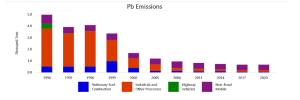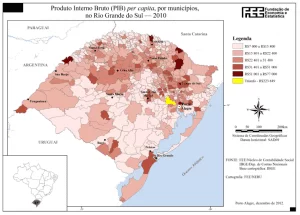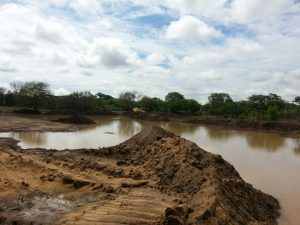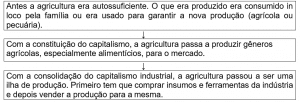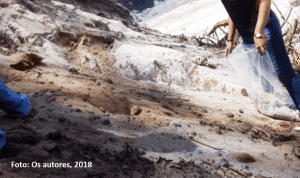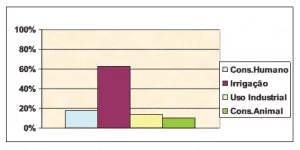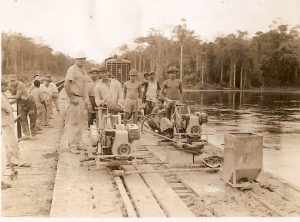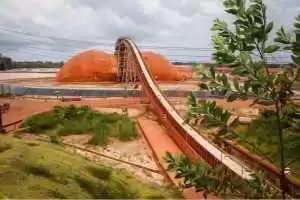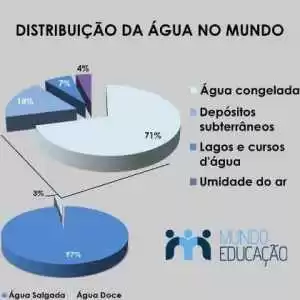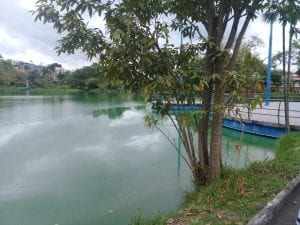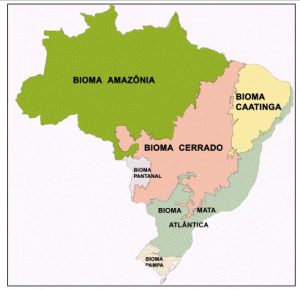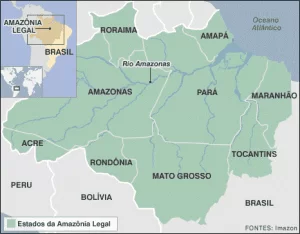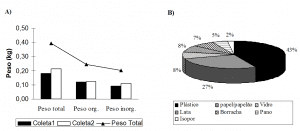ORIGINAL ARTICLE
SOUZA, Keulle Oliveira da [1], SILVA, Inailza Barata [2], CORDEIRO, Nadabe de Jesus da Silva [3], NETO, Lúcio Osvaldo Rabelo Mendes [4], MACÊDO, Jucimeire Rocha [5], MOREIRA, Elisângela Claudia de Medeiros [6], DENDASCK, Carla Viana [7], MORAES, Jones Souza [8] , RAMOS, João Batista Santiago [9], SILVA, Iracely Rodrigues da [10], OLIVEIRA, Euzébio de [11]
SOUZA, Keulle Oliveira da. SILVA, Inailza Barata. Et al. Collapse of the port of Santana-AP in March 2013: Perspectives of a socio-environmental impact on the Amazon River, Brazil. Revista Científica Multidisciplinar Núcleo do Conhecimento. 04 year, Ed. 12, Vol. 05, pp. 48-64. December 2019. ISSN: 2448-0959, Access Link: https://www.nucleodoconhecimento.com.br/environment/collapse-of-the-port-of-santana-ap, DOI: 10.32749/nucleodoconhecimento.com.br/environment/collapse-of-the-port-of-santana-ap
ABSTRACT
This article consists of an analysis of the collapse of the Iron Ore Export Port, located in the municipality of Santana/AP, which occurred in March 2013, and its consequences, especially social and environmental. Based on these aspects, this article aimed to analyze what were and still are the implications of a socio-environmental impact on the Amazon River, six years after the collapse of the Port of Santana-AP. Methodologically, a qualitative, descriptive-analytical and exploratory study was carried out, developed through a bibliographic review research, about the literature published in books, scientific articles published in journals, as well as analysis of official documents and reports, related to studies on the disaster. A new phase of mineral exploration was triggered in the State of Amapá in the early decades of the 21st century. In this context, the municipalities of Santana and Pedra Branca do Amapari were and still are strategic cities for the functioning of the dynamics of mineral exploration in the State. The collapse of the port structure killed six people, poured a high amount of iron ore over the Amazon River, directly affecting the environmental characteristics of Rio, as well as the way of life of communities that depend on it, because these peoples have cultural relations of direct utility and survival with it. In the long run, the disaster affected the amapaense mineral economy, caused mass layoffs, bankruptcy of many service providers, among others. Given the weaknesses evidenced and aggravated from the collapse of the Port of Santana, it is concluded that it is essential to rereformatise the urban-territorial planning policies that invest, from the installation of these enterprises, even in the prevention and alerts of possible disasters, especially in regions that have large mineral projects, such as the case under study.
Keywords: Porto de Santana, Impacto socioambiental, Rio Amazonas, Brazil.
1. INTRODUCTION
The Brazilian Amazon has mineral reserves, of great interests and world utilities, because it holds metallic substances such as iron, manganese, niobium, copper, aluminum, among others, which substantially move the national and world mineral industry. Advances and scientific discoveries in this sector have shown the great potential of exploitation of these minerals in Brazilian soil, as well as their positive impacts on the national and world economy resulting from this activity (AGÊNCIA NACIONAL DE MINERAÇÃO, 2019; CANTO, 2016).
According to data released by the National Mining Agency (ANM), referring to the Brazilian Mineral Yearbook 2018, in the Northern region of Brazil, the states of Pará, Amapá, Rondônia and Amazonas were the ones that stood out in the most important extraction, production and mineral commercialization. In 2017, Pará and Amapá together accounted for 43.25% of the shares in the value of mineral production sold in the country, based on the extraction of metallic substances in the Brazilian Amazon (AGÊNCIA NACIONAL DE MINERAÇÃO, 2019).
In the first decades of the 21st century, in Amapá, the installation of Mineração Pedra Branca do Amapari (MPBA), sold in 2010 to the Australian group Beadell Resources Limited (BRL), and mining and metal s.The (MMX), sold to Anglo American and later to Zamin Ferrous (ZM), represented a new phase of mineral exploration in the State of Amapá (RIBEIRO, SILVA 2010), in the context of environmental management and a consolidated State, motivated by the commercial logic of the international market (CHAGAS, 2013). These mineral enterprises in their new arrangements, stand out in the exploration of gold and iron in the region of the former INDUSTRY and TRADE S.A (ICOMI), being the first industrial mineral exploration project in the Brazilian Amazon, located in Serra do Navio/AP.
In the dynamics of the mining sector of Amapaense, the municipalities of Pedra Branca do Amapari (PBA) and SANTANA have a strategic and necessary function for the operation of the mineral industry. PBA for hosting mines of large enterprises, and Santana is the city where the ports are located, used for the disposal, storage and exports of ores.
In March 2013, the Port of export of iron ore, used by anglo american company, located in the municipality of Santana/AP collapsed, due to inconclusive and conflicting causes, until then. The disaster in the city of Santana, which is twenty kilometers from the capital Macapá, killed six employees (two bodies were never found), poured large amount of iron ore and part of the administrative structure of the company, over the Amazon River and generated (and still generates) social, economic and environmental instabilities for that municipality, to Pedra Branca do Amapari / AP and to amapaense society in general, even directly or indirectly, resulting in legal disputes ranging from environmental recovery, compensation of victims’ families, and a series of disagreements that are not exhausted, due to the complexity of the extreme event, which occurred in the Amazon context, related to mining activity, thus evidencing potentialities and weaknesses in the planning of processes involving the implementation of the enterprises and mineral exploration in the Amapá State.
It is worth mentioning that “it cannot be assumed that all tensions involving natural resources result in environmental conflicts” (BRITO et al., 2011, p. 58). What makes a conflict characterized as socio-environmental is the gathering of several factors, whether related to the lack of a certain resource, reflecting on economic issues and possible social changes caused by it, concussions in social institutions, which are only defined as such, by the ability to generate convulsions or environmental imbalances arising from anthropic actions (LIBISZEWSKI, 1992; BRITO et al., 2011).
Based on these aspects, understanding the disaster phenomenon, such as the collapse of the Port of Santana/AP allows the approximation of several areas of knowledge, among them the environmental ones directly linked to the social sciences. Social groups (families of victims and companies) built their asymmetric perspectives on that extreme event, without due attention to the fact that occurred, associated with the mineral context developed in the State of Amapá.
Isolated scientific interpretations that dissociate man from nature and emphasize dualities between society-nature, are fragile for the analysis of complex phenomena related to development models and the ways in which man establishes his relationship with the environment. Phenomena such as disasters, whether natural or not, require epistemological and conceptual reformulations, which reflect the limits of modern science.
In the context of this thought, Carvalho and Steil (2014) highlight the formulations of possible “Ecological Epistemologies”, with the aim of provoking new interpretations, challenging hegemonic concepts. For the authors “our way of inhabiting the planet is not separate from our way of knowing it. This inseparability of these two modes makes it plausible to reread a set of contemporary authors […]” (CARVALHO; STEIL, 2014, p. 163).
Given the magnitude of the research object in question, it is necessary to establish connections between the various disciplinary fields, which allow organic relationships between academic, professional (civil and military) and popular knowledge (VALENCIO, 2009), mainly in the occurrence of mining-related disasters in the Amazon, where the focus of discussions ends up being in relation to the speech of technicians and the dissemination of numbers (of victims , from costs to indemnification, recovery, always focused on monetary values), but leave serious gaps, with regard to the socio-environmental impacts arising from these disasters, which even there are numerous people and communities that depend on the Amazon River, as in this case, for its survival.
Thus, based on the studies of (OLIVER-SMITH, 1995; QUARANTELLI, 1998; GILBERT, 1998; QUARANTELLI, 2005; RIPLEY, 2008; MARCHEZINI, 2009; VALÊNCIO, 2009; ULLBERG, 2017; MARCHEZINI, 2018), we will discuss the scientific agenda, which has been consolidating in the field of disasters, which contribute to the analysis of the perspectives of social groups involved in these tragedies, such as: victims’ families, public authorities, companies, environmental surveillance and regulatory bodies, among others.
Given the facts available so far, this research is justified by the conflicts that were aggravated and provoked in the State of Amapá, from the collapse of the Port of Santana, private use, occurred in 2013, operationalized at the time by the multinational mining company Anglo American (predecessor of Zamin Ferrous), a disaster that directly associated with prospects of the occurrence of a socio-environmental impact of great proportions on the Amazon River. Based on this context, the present study aimed to analyze what were and still are the implications of a socio-environmental impact on the Amazon River, six years after the collapse of the Port of Santana-AP.
2. METHODOLOGY
The present work was carried out through a qualitative, descriptive-analytical and exploratory approach, developed through a literature review about the literature published in books, scientific articles published in journals, as well as the analysis of official documents and reports, related to the theme under study. In this research, we sought to analyze, in an impartial way, the reality of the facts related to the theme in question, highlighting the main authors who discuss the major projects, especially those related to mining in the Brazilian Amazon region, and analyze the phenomenon of disasters.
It is descriptive-analytical, since it sought to classify, describe, explain and clarify the problem presented. It is also an exploratory research, because it aimed to research, analyze and describe the main ideas of the authors, through the information researched and published by them, referring to the theme in focus.
2.1 STUDY LOCUS
Santana is the second largest municipality in the State of Amapá, with an estimated population of 121,364 people (IBGE, 2019). The occupations in the region of the municipality date back to the sixteenth century, from a Military Grouping on the Island of Santana, located on the left bank of the Amazon River. But it was from the discovery of manganese in the municipality of Serra do Navio/AP, still in the middle of the 20th century that Santana, being a port municipality, received a significant population increase, due to the opening of the “Santana-Serra do Navio” Railway created with the objective of meeting the operational demands of the flow of ore extracted in the region, as well as to transport workers linked to this activity (MORAIS, 2011).
The municipality of Santana still maintains a direct relationship with the mineral industry in Amapá. In 2005, Mineração e Metálicos S.A. (MMX) began to use a significant part of the structure built by the company ICOMI, over 40 years of activities in the State of Amapá, such as: the port terminal, which collapsed in 2013, and the Amapá Railway (EFA), which connects Santana to the municipalities of PBA and Serra do Navio (MORAIS; MORAIS, 2011).
3. RESULTS AND DISCUSSION
The phenomenon “disaster” is a fertile arena for scientific research, construction of technical analyses, unofficial interpretations, dissemination of news and images by the media, to generate moments of solidarity, demonstrate differences and indifferences involved in the sinister. Traditionally, the focus of disasters has focused on naturalization (natural threat) or to solving the problems evidenced by them, isolating them from the social context. In the field of social sciences there is a plurality of interpretations about the term, but also today there are “interpretive convergences and interesting complementarities in the debate around the definition of what a disaster is” (VALÊNCIO; VALÊNCIO, 2017, p. 3), which raise critical questions for the insertion of the social dimension in the analysis of the claims that occurred.
Soon some systematized studies in the area of disasters dating back to the beginning of the 20th century will be highlighted. In 1917, in Canada, more precisely in the Port of War of Halifax, in the city of Halifax, there was a clash between ships loaded with ammunition, which were undermining the world war i industry. The collision between the ships affected thousands of people, leaving several dead and homeless (QUARANTELLI, 1998; MARCHEZINI, 2009).
The disaster at Halifax’s Port of War completed its centenary in December 2017, and is recognized to this day as “the largest explosion of the pre-atomic era caused by the collision of two ships” (MUSEU MARÍTIMO, 2017). In the 1920s, Samuel Henry Prince’s book “Catastrophe and Social Change” was published based on a sociological study of the Halifax disaster. For Ripley (2008), Prince’s work (1920) became a milestone in sociological studies of disasters and disasters, because the author wrote beyond disasters, relating them to the social contexts in which they were included.
Disaster analyses remained timid until the 1950s. After World War II, there was a circular production in the area, focused on behavioral and perceptual analyses, driven by the context of the Cold War, because “a new multitude of anxieties about how the masses might react to nuclear attacks” (RIPLEY 2008, p. 12). At that moment, an interpretive model of disasters was highlighted based on the reaction of people to exogenous forces or facts outside the community, such as an air strike (GILBERT, 1998; QUARANTELLI, 1998; MARCHEZINI, 2009).
In the scope of anthropology, still in the middle of the twentieth century, reference the works of Cyril Belshaw and Felix Keesing (1951) and Anthony Wallace (1956), the first two authors analyzed ways of adapting the OROKAIVA people to the eruptions of Mount Lamington in 1951, the third author, in turn demonstrated strong engagement with the theme disasters, proposing relationships between cultural anthropology and social psychology (MARCHEZINI , 2018).
In the 1970s, anthropologist Anthony Oliver-Smith conducted research after the earthquake that destroyed the Peruvian city yungay that year, relating the “natural” risk to its socioeconomic context. Oliver-Smith (1995) considering as a context the 500 years of colonization of Peru, points out that:
(…) En cierto sentido, el terremoto que devastó la costa central del norte del país y sus zonas andinas, podría ser visto como un evento que empezó hace 500 años con la conquista y colonización del Perú y su consecuente inserción como colonia al sistema económico del mundo en desarrollo, lo cual tuvo como resultado el grave subdesarrollo de la región entera. (OLIVER-SMITH, 1995, p. 3).
From the 1970s on, a model based on social vulnerabilities was observed (GILBERT, 1998). Social scientists sought to shift the idea of risk and danger as exceptional events, to understand them within the social structure. In this sense, it is recommended to read the concept of Risk Society of Giddens (1991) and Beck (1997), where risks become a constitutive part of modernity itself.
Disasters were also interpreted as uncertainties generated by the institutions themselves, especially in the late 1980s, in this view the actions of insurance companies, emergency institutions, that is, disasters are analyzed from the solution-problem relationship (MARCHEZINI, 2018).
Regarding the sociological analyses of the Mendes and Araújo disasters (2015) they state that, in the first analyses of the twentieth century, the focus of the analysis walked through several domains, from those linked to natural and social changes, the so-called socio-environmental changes, then passing through analyses that discuss the socio-environmental vulnerabilities and their resilience capacity, which is the capacity for both social recovery , as well as environmental after disasters. Thus reaching the most contemporary approaches, related to risks and uncertainties, psychological responses of affected social groups, processes of social mobilization, and environmental recovery.
Given these facts and models of approaches, of what is considered classic in social and environmental sciences, it can be said that the study on disasters is a field under construction. According to Quarantelli (2005, p. 27) “not all students who are interested in disasters are stuck in the last century” and the more consistent the basic assumptions are, the more coherent the approach will be. As for the implications of this author, he points out that disasters as social phenomena:
In a way, we can say that the basic paradigm implicit in the area of disasters is acceptable (though not indisputable). The current paradigm involves a series of interrelated concepts, but two of the most fundamental concepts are as follows: (1) disasters are inherently social phenomena, and (2) the origin of disasters lies in the social structure or in the social system. (QUARANTELLI, 2005, p. 38).
Based on these considerations, it is possible to expand discussions on disasters, to address issues that have not been discussed, but that suggest the institution of new possibilities research and work, since the reasons for producing a new object of knowledge (in any field) goes through paradigmatic and epistemological issues, and it is in this sense that disaster analyses intend to contribute , through the maturation, strengthening and reformulation of its concepts and interpretative models. In the socioanthropological domains, the understanding of disasters is centralized in varied dynamics and structures. For Valêncio (2009, p. 5) these fields allow analyses of “social, territorial, environmental, institutional, historically produced relations”.
Through studies not only centered on chronological time and geographic space (which are important for the research lócus), but also on time and socio-environmental space (SOROKIN, 1942).
The analyses of the socio-environmental disasters discussed so far allow reflections and questions to the logic of large and medium industrial developmentprojects in the Brazilian Amazon, expressed through predominantly financial interests, both national and international, and especially lacking studies and interpretations that value the environment and the knowledge and ways of life of peoples known as traditional Amazonia of the Amazon , because both are inseparable (DIEGUES, 2000).
In this contradictory logic of development, it is observed that the global dispute for natural resources in the Brazilian Amazon region makes the competition for control of this territory become fundamental in the geopolitical context of the Amazon. However, this model is directly opposed to the population, economic, cultural, political and social dynamics of the region (SOUZA et al., 2019b).
In the State of Amapá, cities have emerged or modified their dynamics to meet the demands of the large capital, such as Serra do Navio/AP and Pedra Branca do Amapári/AP. For Tostes (2011) these and other Amapa cities are in essence small, but express dilemmas of large cities, because they between aspects of urban and rural life, formal and formal when crossing singular and distinct ways of life.
According to IBGE (2010) the city of PBA had a population increase of 168.72% in ten years, and also estimated that by the end of 2019 the population reaches a total of 16,502 people, obtaining a population growth rate higher, including that of the State itself. However, this population increase was not associated with adequate urban planning, which resulted in the occurrence of worsening of existing urban and social problems, such as lack of basic sanitation and drinking water supply for the entire population, sewage collection and treatment, urban cleaning, correct management of solid waste, urban agglomeration, etc. All due to the demographic explosion of the city, due to the intense migratory flow to the municipality (SOUZA et al., 2019a). Regarding basic sanitation and lack of piped water, through public supply, 67.64% of PBA households do not have these services (SOUZA et al., 2019a).
In view of the above, the collapse of the Port of Santana, from the perspective of a socio-environmental analysis of disasters, cannot be analyzed as an isolated and unilateral fact, which can be reduced to a mere relationship of cause and effect. Directly and objectively, the death of the six workers linked to the Anglo American company and the spill of a large amount of iron ore over the Amazon River have gained prominence among national news in the short term, but in the medium and long term the socio-environmental impacts resulting from this disaster are still immeasurable. For Valêncio and Valêncio (2017), it is common in disaster news coverage to spread technical discourses, aimed at rapid responses to what happened. On the other hand, the authors warn that it is essential to understand between the lines of the disaster phenomenon, as they can be revealing of power games.
The official statistics released in the post-disaster period are gradually forgotten over time. For Valêncio (2009, p.5) “disasters are chaotic scenarios, permeated by tensions and search for solutions, those who die, these are the ones who best bear witness to the indifference, incapacity, misunderstandings and ill will contained in the measures […]”.
Understanding the social and environmental time of the disaster enables long-term discussions. Half a decade after the collapse of Porto, it is still possible to identify some consequences and developments, namely: on February 12, 2019, a new floating port structure of zamin ferrous, a successor company of Anglo American, fell in the same place as the collapse of Porto in 2013. According to Nafes (2019) the structure was not used and cost the equivalent of 484 million reais and its tipping brought direct risks to navigation, as well as generated probable socio-environmental damage in the Amazon River.
In addition, according to information from the Federal Public Prosecutor’s Office, published on December 5, 2019, Anglo American belatedly signed an agreement of 47 million reias, to indemnify the municipalities of Santana, Pedra Branca do Amapari for social and environmental damage resulting from the collapse of Porto (MINISTÉRIO PÚBLICO FEDERAL, 2019).
In addition to the Amazoncontext, but also within the commercial logic of the international market, mineral exploration in Brazil, it is worth mentioning that in March of 2018, anglo american company also recorded two ruptures in the Minas-Rio pipeline, generating gigantic ore pulp leaks in the State of Minas Gerais. The first accident ended up generating the release of 300 tons of iron ore in the ribeirão de Santo Antônio do Grama (MG). The second rupture released 647 tons of ore pulp at Fazenda Córrego Grande, rural area of Santo Antônio do Grama (MG), totaling 947 tons of iron ore that were dumped in the region. Due to the enormous dimensions of disasters, as well as the generation of social and environmental impacts of great magnitude for that region, the Environmental Licensing Board of the Brazilian Institute of the Environment and Renewable Natural Resources (IBAMA) immediately ordered the interruption of the pipeline operation, in addition to five infringement notices totaling R$ 72.6 million against the mining company (IBAMA, 2018).
These citations and reflections, which demonstrate that it is not only the region of the Brazilian Amazon that suffers from these major socio-environmental disasters, resulting from the activity of mineral extraction, but that other regions of Brazil are also affected by these claims, are of paramount importance for an awareness, that these disasters are not exclusive to a particular region, but rather , are the result of a notorious lack of correct strategic planning for the facilities and operation of these large industrial enterprises in the country.
For Moraes (2017) integrated intergovernmental actions can improve managements, so that they act less in short-term palliative actions, and more in structural and preventive measures in the medium and long term. In the Amapaense scenario of conflicts that extend throughout much of the State, it is essential to reform urban-territorial planning policies, which invest in the better planning of industrial mining facilities, in the correct maintenance of these structures, in the prevention and alerts of possible socio-environmental disasters, resulting from the mineral extraction activity in the region.
4. FINAL CONSIDERATIONS
The aftermath of the collapse of the Port of Santana in 2013 shows that the socio-environmental time of the disaster on the Amazon River predate the event occurred, but were aggravated as a result of it. It was only possible to discuss its implications and perspectives, through a brief return to the history of large enterprises installed in the region, in a state with relatively small dimensions, with poorly developed infrastructure, but with a mineral potential of high value, which is highly coveted, both nationally and internationally.
The collapse of Porto brought to light the intrinsic relationship between Serra do Navio, Pedra Branca do Amapari and Santana, as well as the importance of these municipalities for the warming of the Amapaense economy. On the other hand, the fall of the Port of Santana also highlighted problems in the structures of these industrial facilities, which have been used for more than five decades, such as those of the Port in question, and those of the Amapá Railway, which connects those municipalities.
The death of workers, the mass layoffs, labor debts, the struggle for repairs to the damage caused to the environment and the society that suffers to this day the consequences of the disaster, the contamination of rivers and streams, especially the Amazon River, which was directly affected by the disaster that occurred, which may have been affected in its environmental character, in incalculable proportions , the stoppage of exports, the way of stocking ores. All these are facts that demonstrate the weaknesses of industrial mining activities, installed in the State of Amapá.
Therefore, it is concluded that more investments are needed in prevention policies and more rigorous surveillance instruments for the implementation and operation of these large mining projects and their developments, which can mitigate the socio-environmental damage arising from their facilities to possible disasters, such as what occurred with the Port of Santana in the State of Amapá.
REFERENCES
BECK, Ulrich. A reinvenção da política: rumo a uma teoria da modernização reflexiva. In: BECK, U.; GIDDENS, A.; LASH, S. (Ed.). Modernização reflexiva: política, tradição e estética na ordem social moderna. São Paulo: Unifesp, 1997.
BRASIL, Agência nacional de mineração: Anuário Mineral Brasileiro. Substâncias Metálicas / Coord. Geral Osvaldo Barbosa Ferreira Filho; Equipe Técnica por Marina Dalla Costa et al.; – Brasília: ANM, 34 p. 2019.
BRITO, et al. Conflitos socioambientais no século XXI. PRACS: Revista de Humanidades, do Curso de Ciências Sociais da UNIFAP. Macapá, n. 4, p. 51-58, dez. 2011.
CANTO, Otávio. Mineração na Amazônia: assimetria, território e conflito socioabiental. NUMA. 2016.
CARVALHO, Isabel Cristina de Moura, STEIL, Carlos Alberto. Epistemologias ecológicas: delimitando um conceito. Revista Mana, v.20, n.1, Rio de Janeiro, p. 163-183, 2014.
CHAGAS, Marco. Antônio. Amapá: a mineração e o discurso da sustentabilidade– de Augusto Antunes a Eike Batista. Garamond. 2013.
DIEGUES, Antônio Carlos, ARRUDA, Rinaldo Sérgio Vieira. Os saberes tradicionais e biodiversidade no Brasil. São Paulo: NUPAUB-USP: MMA, p. 1-71, 2000.
GIDDENS, Anthony. As consequências da modernidade. São Paulo: UNESP, 1991.
GILBERT, Claud. Studying disaster: changes in the main conceptual tools. In: QUARANTELLI, E. (Ed.). What is a disaster? Perspectives on the question. Routledge: London and New York; p. 11-18, 1998.
IBAMA. Instituto Brasileiro do Meio Ambiente e dos Recursos Naturais Renováveis. Ibama multa Anglo American em R$ 72 milhões por vazamentos no mineroduto Minas-Rio em MG. Brasília, 2018.
IBGE, INSTITUTO BRASILEIRO DE GEOGRAFIA E ESTATÍSTICA. Censo demográfico de 2010.
_____, INSTITUTO BRASILEIRO DE GEOGRAFIA E ESTATÍSTICA. Atlas – Perfil das cidades brasileiras. 2019.
LIBISZEWSKI, Stephan. What is a Environmental Conflict? 1992.
MARCHEZINI, Victor. Dos desastres da natureza à natureza dos desastres. N Valêncio et al. (Orgs) Sociologia dos Desastres: construção, interfaces e perspectivas no Brasil. São Carlos, Rima Editora, p. 48-57, 2009.
____________. As ciências sociais nos desastres: um campo de estudo em construção. Revista Brasileira de Informação Bibliográfica, número 83-2017. São Paulo, p 43-72. 2018.
MENDES, José Manuel; ARAÚLO, Pedro. Risco, catástrofes e a questão das vítimas, E-cadernos ces [Online], 25 | 2016, colocado online no dia 15 Junho 2016. DOI: 10.4000/eces.2029.
MARÍTIMO, Museu de Pesquisa. A explosão de Halifax. 2018.
MINISTÉRIO PÚBLICO FEDERAL. Anglo American firma acordo para indenizar municípios em 47 milhões pelo desabamento do Porto de Santana (AP). 2019.
MORAIS, Paulo Dias. O Amapá em perspectiva: municípios do Amapá. Gráfica. 2011.
MORAIS, Paulo Dias; MORAIS, Jurandir dias. Geografia do Amapá Gráfica. 2011.
MORAES, Marcela. (2017). As ocupações irregulares e suas relações com as áreas de risco no espaço urbano de Cariacica-ES: o caso de Porto de Santana. Dissertação de mestrado. UNIVERSIDADE FEDERAL DO ESPÍRITO SANTO. CENTRO DE CIÊNCIAS HUMANAS E NATURAIS PROGRAMA DE PÓS-GRADUAÇÃO EM GEOGRAFIA. 133 p. 2017.
NAFES, Seles. Sem nunca ter sido usado, Porto de 484 milhões de reais afunda no Rio Amazonas. 2019.
OLIVER-SMITH, Anthony. Disastres y Sociedade. Revista Semestral de La Red de Estudios Sociales en Prevencion de Desastres En America Latina. 2-1.0-nov-19-2001.
RIBEIRO, Adalberto Carvalho; SILVA, Rubens Pinheiro. Aspectos institucionais e urbanos para o desenvolvimento local do município de Pedra Branca do Amapari/Amapá. PRACS: Revista de Humanidades do Curso de Ciências Sociais da UNIFAP Macapá, n. 3, p. 19-32, Dez. 2010.
RIPLEY, Amanda. Impensável: Como e por que as pessoas sobrevivem a desastres. Ed. Globo, 2008.
SOUZA, Keulle Oliveira da. et al. Exploração mineral na Amazônia brasileira: Relações de trabalho e migração interna no Município de Pedra Branca do Amapari-AP. Revista Científica Multidisciplinar Núcleo do Conhecimento. Ano 04, Ed. 12, Vol. 08, pp. 05-28. Dez. 2019a. ISSN: 2448-0959
SOUZA, Keulle Oliveira da. et al. Alterações socioambientais e na saúde decorrentes da implantação de projetos de mineração em Barcarena-PA: O desenvolvimento e suas contradições na Amazônia, Brasil. Revista Científica Multidisciplinar Núcleo do Conhecimento. Ano 04, Ed. 12, Vol. 08, pp. 29-39. Dez. de 2019b. ISSN: 2448-0959
SOROKIN, Pitirim, Alexandrovich. Man and society in calamity: the effects of war, revolution, famine, pestilence upon human mind, behavior, social organization and cultural life. Nova York: E.P. Dutton and Company, 1942.
QUARANTELLI, Enrico Louis. What is a disaster? Perspectives on the question. Routledge: London and New York, 1998.
QUARANTELLI, Enrico Louis. Uma agenda de pesquisa do século 21 em Ciências Sociais para os desastres: questões teóricas, metodológicas e empíricas, e suas implementações no campo profissional. 2005 (tradução Raquel Brigatte). Revista o Social em Questão. Ano XVIII nº 33. 2015.
TOSTES, José Alberto. Questões urbanas, pobreza e falência das cidades do Estado do Amapá. Disponível em: https://josealbertostes.blogspot.com/2015/03/questoes-urbanas-pobreza-e-falencia-das.html Acesso em 10 de dezembro de 2019
VALÊNCIO, Arthur; VALÊNCIO, Norma Felicidade Lopes da Silva. A Cobertura jornalística sobre desastres no Brasil: dimensões sociopolíticas marginalizadas no debate público. Anuário Electrónico de Estudios em Comunicación Social “Disertaciones”. 10(2), p. 165-186. 2017.
VALÊNCIO, Norma Felicidade Lopes da Silva. Da morte de Quimera à fuga de Pégaso: a importância da interpretação sociológica na análise no fenômeno denominado desastre. N Valêncio et al. (Orgs) Sociologia dos Desastres: construção, interfaces e perspectivas no Brasil. São Carlos, Rima Editora, p. 1-19. 2009.
[1] Master’s student in Anthropic Studies in The Amazon-PPGEAA, at the Federal University of Pará – UFPA, Campus Castanhal.
[2] Specialist in Planning and Public Budget. Lecturer at UNIP/AP University.
[3] Specialist in Planning and Public Budget. Lecturer at UNIP/AP University.
[4] Agronomist. Teacher. Researcher at the Association in Settlement Areas in the State of Maranhão – ASSEMA.
[5] Master’s degree in Anthropic Studies in the Amazon. Professor of the Teaching Network of the Municipality of Mãe do Rio/PA.
[6] Master in Theory and Behavior Research. Professor and Researcher at the State University of Pará – UEPA. PhD student in Tropical Diseases at the Federal University of Pará – NMT/UFPA.
[7] Theologian. PhD in Clinical Psychoanalysis. Researcher at the Center for Research and Advanced Studies, São Paulo, SP.
[8] Master’s degree in Anthropic Studies in The Amazon-PPGEAA, at the Federal University of Pará – UFPA, Campus Castanhal.
[9] PhD in Philosophy and Educational Sciences. Professor and Researcher at the Federal University of Pará – UFPA, Brazil Campus.
[10] PhD in Amazonian Environmental Resources. Professor and Researcher at the Federal University of Pará – UFPA, Bragança Campus.
[11] PhD in Medicine/Tropical Diseases. Professor and Researcher at the Federal University of Pará – UFPA. Collaborating Researcher of the Center for Tropical Medicine – NMT/UFPA.
Sent: December, 2019.
Approved: December, 2019.

